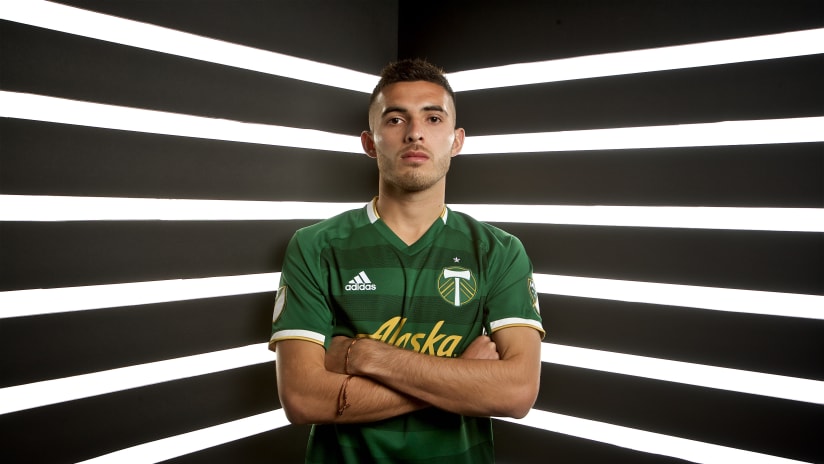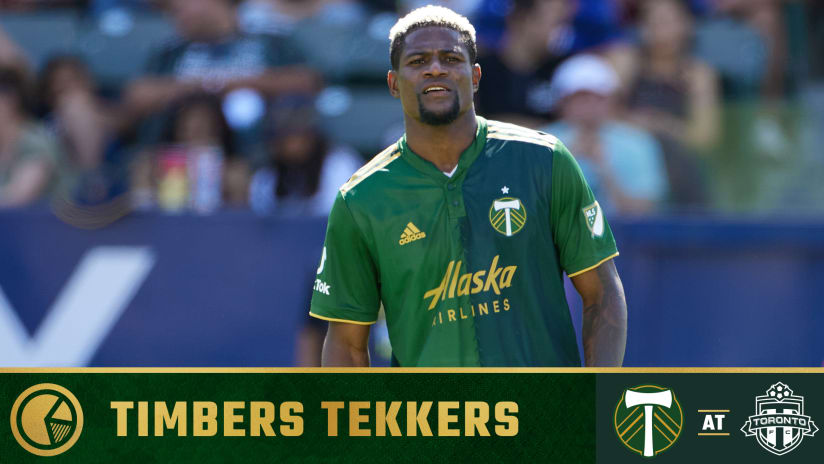The Portland Timbers have gotten their share of love from MLSsoccer.com’s young player lists over the years, whether we’re talking about the current incarnation (the 22 Under 22) or its previous version, the 24 Under 24. Before this year, four different Timbers have found their names among those rankings, including Darlington Nagbe nabbing the top spot in 2013. Andrew Jean-Baptiste (2013), Lucas Melano (2015, 2016) and Alvas Powell (2015) have also been honored by these lists, before.
But forecasting players’ careers is difficult, and while the 22 Under 22 doesn’t explicitly claim to be reading players’ futures, its desire to look at talents without much MLS experience and try to evaluate them against players with first-division minutes requires some speculation. And in the past, that speculation has led to some curious decisions regarding Timbers, like omitting Jeremy Ebobisse entirely from previous lists, ranking Nagbe 10th then 15th in the first two seasons of his eligibility (2011, 2012), and never finding a place for Marco Farfan, even at the bottom of these lists, despite a buzz-creating debut in Carson, California, as an 18-year old and his place, at previous points this year, as one of the youngest competing to be a U.S. Olympian next summer.
More than anything about their futures, these lists should be seen as a sign of players’ league-wide regard: the picture the appointed MLS zeitgeist is seeing, in the moment. That’s the context around Cristhian Paredes’ 2019 selection. In his last year of eligibility for the list, Paredes enters the Under 22 at number 19, gaining recognition after claiming a starting spot in Portland’s midfield and collecting four goals over his season’s 1,651 regular season minutes.
Perhaps the biggest compliment you can give Parades is in our lack of surprise. Throughout the first half of his 2018 MLS debut, Parades showed the same qualities as he did last season, albeit with the consistency of a player one year younger. Acclimatized to MLS in 2019, and months removed from the personal misfortune of an uncle’s passing that derailed his initial campaign, Parades performed to the level every Timbers insider and outsider should have reasonably expected. If, last February, somebody told you Parades would score four times, assist on two other goals, make his way back into the Paraguayan senior national team and secure a starting spot next to Diego Chara, your answer probably would have been closer to “Yeah, sounds about right,” than “that doesn’t sound reasonable.”
But there’s never been a reasonable doubt about what Paredes can contribute. The only doubts have been in his subtext: in all of us forgetting how young he is. Physically mature for his age, and with the movements and instincts of somebody two or three years older, Paredes always makes us forget that he’s eligible for lists like this; that he could go to Japan for next summer’s Olympics without occupying one of Paraguay’s three over-age spots (qualification pending); that the version we see of him, now, may be far short of what, in three years, he’s likely to become.
And in that forgetfulness, perhaps we, those closest to Parades’ development, are complicit. The last year has seen Ebobisse rightfully celebrated for his breakthrough as a regular starter, and the progress of Farfan as a Homegrown will always be in focus. The emergence of Marvin Loría and Renzo Zambrano as regular contributors has been covered as part of the narrative of Timbers 2 increasingly becoming a landing spot for future talent. Eryk Williamson, too, has been the subject of some attention because of his Homegrown status, his United States national team eligibility, and the flashes of creativity and control he’s made abundant over two seasons at USL. Each of those players have narratives attached to them that make sure their futures are discussed.
Parades’ arrival, though, cast him on a different track. In hindsight, that track was probably an unfair one. With an influx of allocation money last winter, the Timbers acquired a number of players who added immediate depth to the roster. Samuel Armenteros made his impact felt early. Andy Polo ended up starting an MLS Cup final. Julio Cascante, over two years, has shown the potential to grow into an MLS starter – as has Parades, who has already reached that threshold.
Parades, though, is much younger than any of those players, and he’d already had a stint with Club América in Mexico. He had the virtue of being on both on the prospect track and profiling as somebody who can help immediately. As a result, from the moment he won a starting spot in Portland’s first game last season, at the LA Galaxy, it was natural to look at him through the lens of a mature talent – with all the expectations that entailed – even if his soccer maturity is still ongoing.
The 2019 season reminded us as much. He doubled his goal scoring, took 16 more shots, played in his first postseason game, and committed 16 more fouls. That last stat may not sound like a positive, but it shows how much more involved he was in trying to win the ball. In his second year, Parades got himself in more positions to be impactful, at numerous levels of the field. And in results – whether we’re talking about pass competition rate, shots taken per 90 minutes, rate of fouls drawn, shots created, or pure number of passes – Paredes has shown meaningful improvement across a number of areas.
Perhaps most encouraging: Nothing about his performance feels flukey. Maybe he won’t score four goals again in 2020 – scoring at his position can be subject to a lot of variance – but he could also score more. His history and skillset project him as a textbook fifth man in attack, and having only made 21 appearances last season, his minutes played could increase dramatically going forward. Much like last winter, when thoughts of a four-goal, two-assist season seemed totally reasonable, would it be so remarkable if, with 600 extra minutes and a bigger role, Parades produces a six-goal, five-assist season?
Absolutely not. And that might be the best way to look at Parades’ future. There's nothing about what he is doing now that is unreasonable. His biggest assets are reliable, if still improving ones. But if he can continue to show incremental improvement in the other parts of his game – the parts that are additive, but not definitional – you have a player who, within the structure of MLS, would be very valuable.
Perhaps lists like the 22 Under 22 could have seen this last year, too; still, there is magic to projecting prospects, one that relies on the mythologies we build around players. In their narratives, some players carry that majesty. Some players don’t.
With Paredes, his predictability shouldn’t be used against him. The maturity he has for his age isn’t an excuse to overlook, in that age, his relatively young number. There are a lot of reasons, easy to see, that he deserves this place among the league’s best young players. Because he is one.












